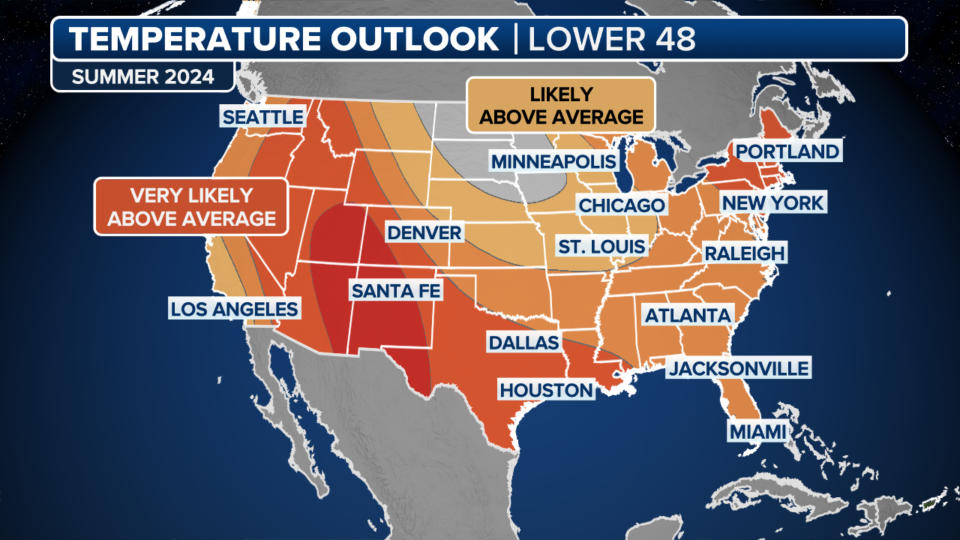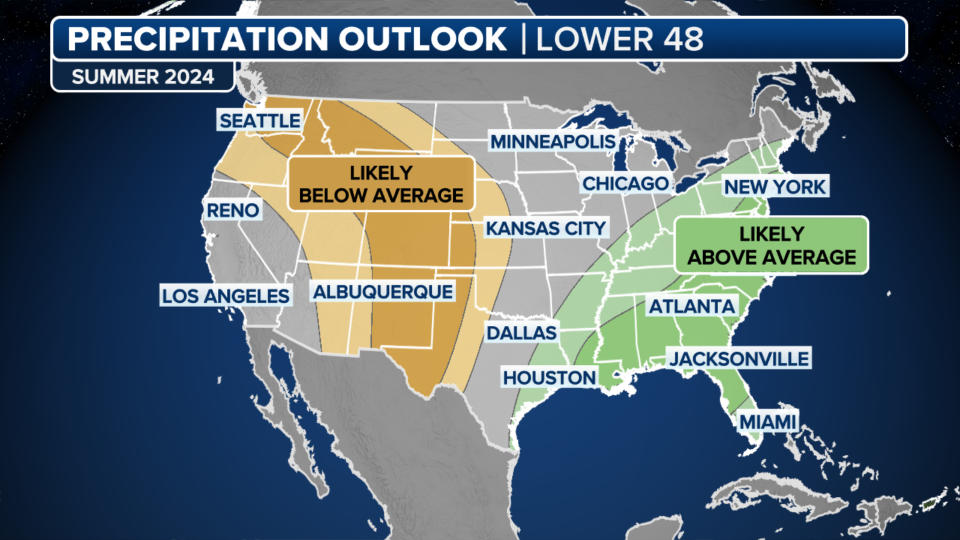Developing La Nina to bring summer scorcher to millions with soaking storms in eastern US

Get ready for plenty of sweat and discomfort this scorching summer as high temperatures are expected to dominate the season for millions, fueled by a developing La Niña climate pattern.
NOAA's updated climate outlook for the meteorological summer period from June 1 to Aug. 31 was released on Thursday. It indicates that above-average temperatures are expected across nearly all the Lower 48 states, with wetter-than-average weather anticipated in the eastern part of the nation.
The outlook sets the country up for what could be one of the warmest summers in history, outpacing records set in 2021 and 1936.
It all comes down to a La Niña climate pattern expected to develop quickly in the coming months. This pattern will impact U.S. weather, particularly in the latter part of the summer, fall and hurricane seasons, according to NOAA's Climate Prediction Center.
WHY SUMMER SHOULD ACTUALLY BEGIN ON JUNE 1

While El Niño conditions are still present, water temperatures continue to cool as the switch to La Niña is underway. According to NOAA, a full transition to La Niña will likely occur during the summer.
This transition is the primary driver for NOAA's summer outlook, which calls for the highest chance of warmer-than-average temperatures in the western U.S. and across the southern Plains into the western Gulf Coast region.
Above-average temperatures are also favored for the eastern portion of the country, especially the Northeast.

Regarding precipitation, a pronounced east-west split is forecast, with below-average precipitation across most of the West, from the Pacific coast to the Rocky Mountains.
Above-average rainfall is favored for a large area stretching from the Gulf Coast northeastward across the lower Mississippi Valley and the Southeast, into the Ohio Valley, mid-Atlantic and southern New England.

NOAA experts cite increased soil moisture as an influence on this summer's outlook.
Significant increases in soil moisture were observed in the past month over the north-central U.S., and soil moisture remains above average, according to NOAA.
Along with the increase in soil moisture, sea-surface temperatures were observed running above average along the Gulf Coast and near the Atlantic coast of the Southeast.
According to NOAA, soil moisture levels and anomalies in sea-surface temperatures can significantly impact local weather patterns in the coming months.
Original article source: Developing La Nina to bring summer scorcher to millions with soaking storms in eastern US

